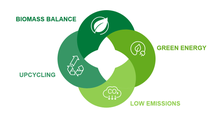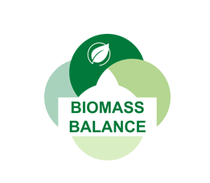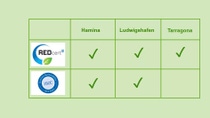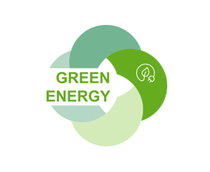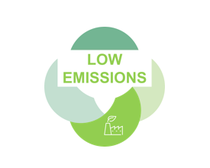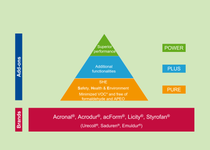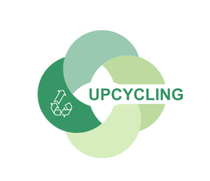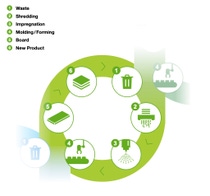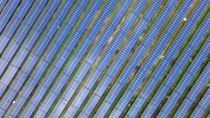Replacing fossil energy with energy from renewable sources is one important lever to achieve our climate protection goals and will have the largest impact on reducing our emissions in the coming years. With the increasing electrification of our processes, we expect our global electricity demand to at least double or even triple by 2040. In 2022, renewable energies accounted for 16% of BASF’s global electricity demand. At the end of 2022, 108 BASF sites worldwide were already partially or fully powered by renewable energy. By 2030, we aim to source more than 60% of our energy demand from renewable sources, which corresponds to the total electricity demand of BASF in 2021. Our BASF production sites for Fiber Bonding in Ludwigshafen, Hamina and Tarragona are also working on solutions to enable the switch to green energy.
Our BASF site in Hamina, Finland
The BASF site in Hamina has already completed its switch to 100 % green energy in 2022. With the switch to 100 % green electricity, BASF’s Hamina site reduced its scope 2 emissions by 14% or 313 tons of CO2 per year. The yearly CO2 savings equal approximately 11.5 million passenger car kilometers.
Our BASF site in Ludwigshafen, Germany
In the future our BASF site in Ludwigshafen, Germany will be supplied with green energy from various sources. BASF signed a , effective as of January 1, 2022. The agreement includes the provision of up to 20.7 terawatt hours of renewable electricity by ENGIE. Additionally, , under which BASF will offtake the output of 186 megawatts from Ørsted’s planned Borkum Riffgrund 3 Offshore Wind Farm in the German North Sea. The offshore wind farm will go into full commercial operation in 2025. The corporate power purchase agreement for offshore wind will run for 25 years. It will help cover the increased electricity needs of low-emission technologies for BASF and is a step towards BASF’s ambition of becoming carbon neutral by 2050. The further secures substantial green power volumes for BASF in Europe. In 2023, BASF, Vattenfall, and Allianz jointly inaugurated a 1.5 GW wind farm in the North Sea. HKZ is one of the largest offshore wind farms in the world and plays an important role in BASF's transition towards Net Zero. Around half of the electricity will be used to reduce the carbon footprint of our products at BASF sites in Europe and to power innovative, low-emission technologies. The subsidy-free offshore wind farm is expected to become fully operational in 2024.

